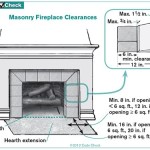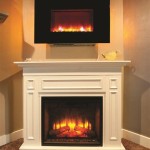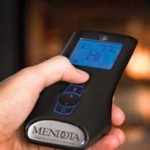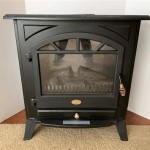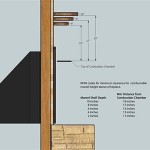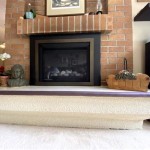Natural Gas Stove Fireplaces: A Comprehensive Overview
Natural gas stove fireplaces represent a popular heating and aesthetic solution for many homes. They combine the convenience of gas heating with the visual appeal of a traditional wood-burning fireplace, offering a blend of efficiency and ambiance. These appliances are designed to provide supplemental heat to a room or area, and they come in a variety of styles, sizes, and functionalities to suit diverse needs and preferences.
The core function of a natural gas stove fireplace involves burning natural gas to generate heat. This heat is then distributed into the surrounding environment through convection, radiation, or a combination of both. The visual aspect is achieved through a carefully designed firebox containing ceramic logs or other decorative elements that mimic the appearance of a real wood fire. Glass panels often enclose the firebox, providing a clear view of the flames while preventing drafts and enhancing safety.
The widespread adoption of natural gas stove fireplaces can be attributed to several factors, including ease of use, relatively low maintenance requirements compared to wood-burning fireplaces, and the availability of different control options such as thermostats and remote controls. Furthermore, advancements in technology have led to increased efficiency and reduced emissions, making them a more environmentally friendly heating alternative compared to older models and some other fuel types.
Key Advantages of Natural Gas Stove Fireplaces
Natural gas stove fireplaces offer a range of benefits that contribute to their popularity among homeowners. These advantages span across convenience, efficiency, aesthetics, and environmental considerations.
Convenience and Ease of Use: One of the primary advantages of a natural gas stove fireplace is its ease of use. Unlike traditional wood-burning fireplaces, natural gas models require no manual tending of the fire. They can be ignited and extinguished with the flip of a switch or the press of a button on a remote control. This eliminates the need to gather, store, and transport firewood, as well as the labor involved in building and maintaining a wood fire. Many models are equipped with thermostats, allowing users to automatically regulate the temperature of the room and maintain a consistent level of comfort. This functionality provides a set-and-forget heating solution, particularly valuable during colder months.
Efficiency and Cost-Effectiveness: Natural gas stove fireplaces can be highly efficient heating appliances. Modern models are designed to maximize heat output while minimizing gas consumption. The efficiency is often expressed as a percentage, indicating the proportion of gas energy that is converted into usable heat. Higher efficiency ratings translate to lower heating costs. Furthermore, natural gas often proves to be a cost-effective fuel source compared to electricity, propane, or oil, depending on regional energy prices. The precise cost savings will vary based on local utility rates and the frequency and duration of fireplace use. However, the potential for reduced heating bills is a significant draw for many homeowners.
Aesthetic Appeal and Design Versatility: The aesthetic appeal of a natural gas stove fireplace is a significant factor in its popularity. These fireplaces offer the visual warmth and ambiance of a traditional fire without the mess and hassle. Manufacturers offer a wide range of designs, from traditional stove styles to more contemporary and minimalist looks. The firebox often contains meticulously crafted ceramic logs, rocks, or glass beads that effectively mimic the appearance of a real wood fire. The flames themselves can be adjusted for intensity and color, allowing users to customize the visual experience. This versatility makes it possible to integrate a natural gas stove fireplace seamlessly into a variety of interior design schemes.
Operational Principles and Components
A natural gas stove fireplace operates on a relatively straightforward principle: controlled combustion of natural gas to produce heat and flames. This process is facilitated by several key components working in concert.
Gas Valve and Burner Assembly: The gas valve is a critical safety component that controls the flow of natural gas into the fireplace. It is typically electronically controlled and operates in conjunction with a pilot light or electronic ignition system. When the fireplace is activated, the gas valve opens, allowing gas to flow to the burner assembly. The burner assembly is designed to distribute the gas evenly and mix it with air to ensure proper combustion. The design of the burner assembly affects the shape and character of the flames, contributing to the overall visual appeal of the fireplace.
Pilot Light or Electronic Ignition: The pilot light is a small, continuously burning flame that ignites the main burner when the fireplace is activated. Some newer models utilize electronic ignition systems, which eliminate the need for a standing pilot light. Electronic ignition systems use a spark or hot surface igniter to ignite the gas, offering increased energy efficiency by avoiding continuous gas consumption for the pilot light. These systems are generally considered more modern and energy-conscious.
Firebox and Decorative Elements: The firebox is the enclosed chamber where combustion takes place. It is typically constructed from steel or cast iron and is designed to withstand the high temperatures generated by the burning gas. The interior of the firebox contains decorative elements such as ceramic logs, rocks, or glass beads. These elements are carefully arranged to resemble a real wood fire and enhance the aesthetic appeal of the fireplace. The design of the firebox also plays a role in directing heat flow and ensuring efficient heat distribution.
Ventilation System: Proper ventilation is essential for the safe operation of a natural gas stove fireplace. There are two primary types of ventilation systems: direct vent and vent-free. Direct vent fireplaces draw combustion air from outside the home and exhaust combustion byproducts directly to the outdoors through a sealed venting system. This system ensures that no combustion gases enter the living space. Vent-free fireplaces, on the other hand, do not require venting. They burn natural gas very cleanly and release minimal amounts of combustion byproducts into the room. However, building codes and regulations regarding vent-free fireplaces vary by jurisdiction, and they may not be permitted in all areas. Furthermore, vent-free models often have oxygen depletion sensors that automatically shut off the gas supply if oxygen levels in the room become too low.
Safety Considerations and Maintenance
While natural gas stove fireplaces are generally safe and convenient, it is essential to adhere to proper safety guidelines and perform regular maintenance to ensure their continued safe and efficient operation.
Carbon Monoxide Detectors: Carbon monoxide (CO) is a colorless, odorless gas that can be produced by incomplete combustion of natural gas. CO poisoning can be fatal. It is crucial to install and maintain carbon monoxide detectors in the vicinity of any natural gas appliance, including a fireplace. Detectors should be tested regularly to ensure they are functioning properly. Batteries should be replaced as needed. Detectors are a primary line of defense against CO poisoning.
Professional Installation and Inspections: It is strongly recommended to have a natural gas stove fireplace professionally installed by a qualified technician. A professional installation ensures that the fireplace is properly connected to the gas line and venting system, and that it meets all applicable building codes and safety regulations. Regular inspections by a qualified technician are also recommended to identify and address any potential safety issues or maintenance needs. Inspections can catch problems before they become major hazards or expensive repairs.
Regular Cleaning and Maintenance: Regular cleaning and maintenance are essential for the safe and efficient operation of a natural gas stove fireplace. The glass panels should be cleaned periodically to remove soot and buildup, which can obstruct the view of the flames. The burner assembly and firebox should also be inspected and cleaned to remove any debris or obstructions. The venting system should be checked for blockages or damage. Cleaning and maintenance are critical for both safety and optimal performance.
Proper Ventilation and Airflow: Ensuring proper ventilation and airflow is crucial for preventing the buildup of combustion gases and maintaining a healthy indoor environment. Do not obstruct the air vents to the fireplace. If using a direct vent fireplace, ensure that the venting system is properly sealed and free from damage. If using a vent-free fireplace (where permitted), ensure that the room is adequately ventilated. Proper ventilation is essential for both safety and the effective functioning of the fireplace.
Following Manufacturer's Instructions: Always follow the manufacturer's instructions for operating, maintaining, and troubleshooting the fireplace. The manufacturer's instructions provide specific guidance on the safe and proper use of the appliance. Disregarding these instructions can lead to safety hazards or damage to the fireplace.
In summary, natural gas stove fireplaces offer a combination of warmth, ambiance, and convenience, making them a popular choice for supplemental heating. Understanding their operational principles, safety considerations, and maintenance requirements is crucial for ensuring their safe and efficient operation, maximizing their benefits, and minimizing potential risks.

Free Standing Gas Fireplace Stoves For 30 On Now

Freestanding Gas Stoves Stove Fireplaces Napoleon

Wanders Stove Tali 3xl For Natural Gas

Gas Stoves Made In Usa Lopi

Valor Madrona Freestanding Gas Stove Bob S Intelligent Heating Decor

Oxford Direct Vent Gas Stove The Place

Vision Small Gas Stoves Gazco Contemporary

Kozy Birchwood 20 Gas Stove Fireplace S Hearth Home

85 Gabo Gas Stove Stoves Fireplace Inserts Wood Natural Propane Vermont Castings Valor Lennox Superior Freestanding Regency Heat And

Regency Ultimate U39e Gas Stove Natural Chadwicks S

